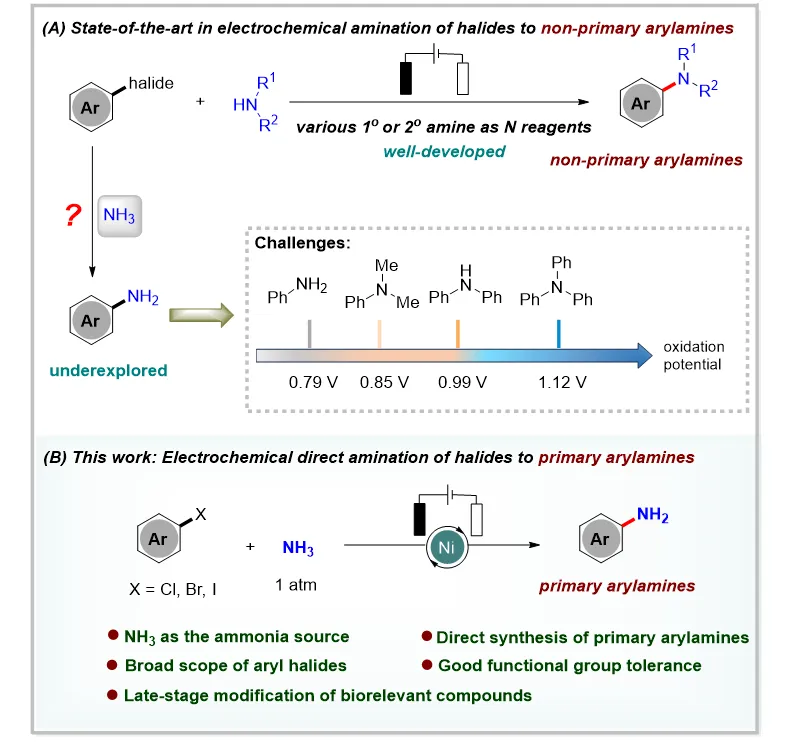Aniline compounds are highly valuable, ubiquitous skeletons that serve as important organic intermediates and basic chemical raw materials. They are widely applied in pharmaceuticals, agrochemicals, dyes, and functional materials. The prevalence of primary arylamines underscores the significance of C─N bond formation, which is one of the most valuable and widespread transformation in synthetic chemistry. As a result, enduring efforts have been devoted to the development of efficient and versatile methods for the synthesis of primary arylamine derivatives, such as Buchwald–Hartwig and Ullmann–Ma amination. With the continuous development and innovation in organic chemistry, new synthetic technologies, for example photochemical C─N coupling is emerging as a fundamental and indispensable process, providing more options for the synthesis of primary arylamines. Moreover, the diversification and improvement of synthetic routes have driven cutting-edge research and development in the field of organic chemistry. Despite that significant progress has been made in establishing methods for the synthesis of primary arylamines, the development of general and greener methods to access diverse functionalized aromatic amines still remains highly desirable, especially for the direct synthesis of primary arylamines.
Recently, Youai Qiu’s group have developed a method for the direct synthesis of primary arylamines through electrochemical amination of aryl halides using NH3. In this process, the weak nucleophile, NH3, acts as an efficient nitrogen source to achieve the synthesis of primary arylamines. They have achieved good functional group tolerance and a broad scope of functionalized primary arylamines in moderate to excellent yields. Moreover, the facile scalability to gram-scale and the sequential modification of drug molecules shows the potential of this methodology for further applications. Detailed mechanistic studies supported the proposed mechanism, where the aryl Ni(II) intermediate is crucial for realizing the Ni(I/III) cycle. This electrochemical system offers a powerful strategy for the synthesis of primary arylamines, which play a key role as versatile precursors, and in late-stage derivatization of biorelevant compounds. Relevant achievements were published in Angew. Chem. Int. Ed., 2025. DOI: 10.1002/anie.202504459.
